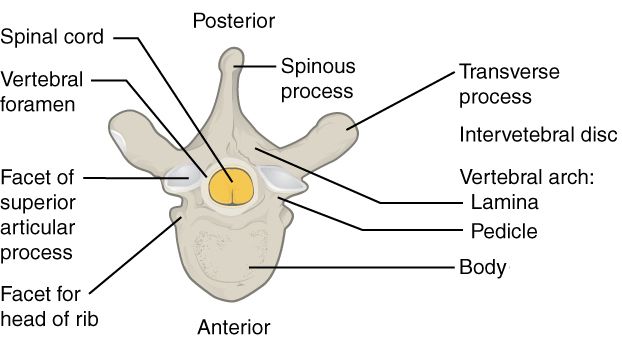Going to a Chiropractor is Riskier Than You Think

Since you're reading this, you're likely interested in the controversy surrounding this field.
First, let's establish what the field of chiropractic care entails.
D.D. Palmer invented chiropractic care around 1890. The main concept behind this field is that spinal "misalignments" cause many health problems and diseases. This was given the special term "subluxations" by adherents of chiropractic beliefs. This idea has never been proven true, and the chiropractic definition of subluxations has been repeatedly shown not to exist. The medical term that most closely describes what a chiropractor calls a subluxation is just a partial dislocation. A study published in 2009 says as much:
There is a significant lack of evidence in the literature to fulfill [BJ] Hill's criteria of causation regarding chiropractic subluxation. No supportive evidence is found for chiropractic subluxation being associated with any disease process or of creating suboptimal health conditions requiring intervention. Regardless of popular appeal, this leaves the subluxation construct as unsupported speculation. This lack of supportive evidence suggests the subluxation construct has no valid clinical applicability.
Related to that, the entire field of chiropractic care is devoted to curing diseases through joint manipulation. That's what they believe, at least. They genuinely believe that what amounts to a back rub can, quite literally, cure a bacteria or virus-based illness. Even though they don't exist, subluxations are treated by manual spine adjustment. Though this is dangerous, many people still flock to chiropractic clinics weekly for regular "adjustment."
Why do people go? They generally believe that their bones have somehow drifted out of place and that this is causing some nervous system problems. They also believe this can be "fixed" by the person who informed them that the bones are no longer where they are supposed to be. Some people go in all the way and believe this will restore chi flow or something similar. No, chi/ki/qi/et. al are not known to exist. No, you can't throw ki-fireballs. I was disappointed too.
Though the primary underpinnings of chiropractic care are known to be false, chiropractors do see results through two primary means: placebo effect and massage therapy. Everyone has a friend that swears by their weekly chiropractor visit. Let's look at why.
First, let's examine the placebo effect. Most commonly, this term refers to using something like sugar pills as a control in an experiment to determine the effectiveness of a drug. The control group usually, believing that they are taking the actual drug, will exhibit psychosomatic effects related to the drug.
The mind plays tricks on the body.
How does this relate to chiropractors?
Simple.
You go to a clinic expecting to feel better after you leave.
You're seen by a "doctor" in a lab coat who prescribes an elaborate care routine. The procedure is done in a clinical, professional manner or a personal, relaxing setting. Either way, the illusion is complete. You pay a substantial sum of money for this high-quality care. Afterward, you feel much better since you were treated by someone in a lab coat (or yoga pants with incense, depending on the flavor of the office).
Next, we're going to consider massage therapy. Typically, people go to a chiropractor to get their aches and pains fixed. Most chiropractic care routines involve either physical therapy-style movement or therapeutic massage. Guess what? This stuff works! Granted, you're not seeing a licensed massage therapist or physical therapist, but you're often getting some of the same treatment that a real physical therapist would prescribe. In this circumstance, chiropractors can be helpful. However, that doesn't justify the major problem that this creates.

You may be asking yourself what's the harm in seeing a chiropractor. First, glance up at the above image. Note the location of the spinal cord. Consider the impact of forcing vertebrae beyond the limits of natural body motion. The spinal cord is between 6 and 13mm thick. Severing it will render everything below that point paralyzed. Scary? Yep.
Now let's look at this case as a prime example of what you do not want to have happen:
In this case, an individual experiencing neck pain went to a chiropractor. The chiropractor performed an x-ray but performed no form of soft tissue scans (specifically cited for not doing an MRI). The chiropractor diagnosed the patient with "mild spasm" based on X-ray scans of the patient's bones. The chiropractor then performed his normal spinal and neck manipulations. The patient reported increasing pain after each treatment. After the third treatment, he was left as a quadriplegic. The chiropractor never performed a CT or MRI scan. This is not an isolated incident. There are dozens, if not hundreds, of documented cases of this exact problem. That is why you should go to a licensed physical therapist.
Here's a quote from Dr. Stephen Barrett, MD, from Quackwatch.com:
Stroke from chiropractic neck manipulation occurs when an artery to the brain ruptures or becomes blocked by a clot due to being stretched. The injury often results from extreme rotation in which the practitioner's hands are placed on the patient's head to rotate the cervical spine by rotating the head: The vertebral artery: is vulnerable because it winds around the topmost cervical vertebra (atlas) to enter the skull, so that any abrupt rotation may stretch the artery and tear its delicate lining. The anatomical problem is illustrated on page 7 of The Chiropractic Report, July 1999. A blood clot formed over the injured area may be dislodged and block a smaller artery that supplies the brain. Less frequently, the vessel may be blocked by the blood that collects in the vessel wall at the site of the dissection.

Chiropractors would like you to believe that the incidence of stroke following neck manipulation is extremely small. Speculations exist that the risk of a serious complication due to neck manipulation is somewhere between one in 40,000 and one in 10 million manipulations. Several recent studies found that the odds measurement regarding a stroke event could typically increase by a factor of 5 among those receiving cervical joint manipulation treatment.
This factor is likely to rise because:
(a) there have only been a few systematic studies of stroke incidence against a large population
(b) the largest malpractice insurers won't reveal how many cases they know about
(c) Many cases that medical doctors see are not reported in scientific journals nor is there a centralized collection database.
Still not convinced? In 1992, there was a study by Stanford where 486 members of the American Academy of Neurology were asked how many patients they had seen that had suffered a stroke within 24 hours of a chiropractic adjustment. Among that group, 55 patients were discovered that fit the criteria of chiropractic-induced stroke.
Just in case that wasn't enough enjoy some further reading:
Adverse Events Associated With Pediatric Spinal Manipulation: A Systematic Review
Adverse effects of spinal manipulation
Cervical Arterial Dissections and Association With Cervical Manipulative Therapy
Questions? Comments? Feel free to leave a comment below.





Member discussion